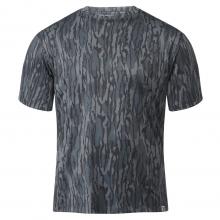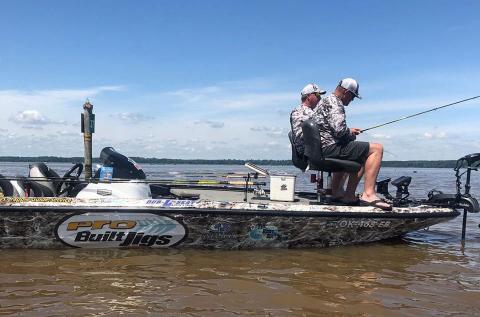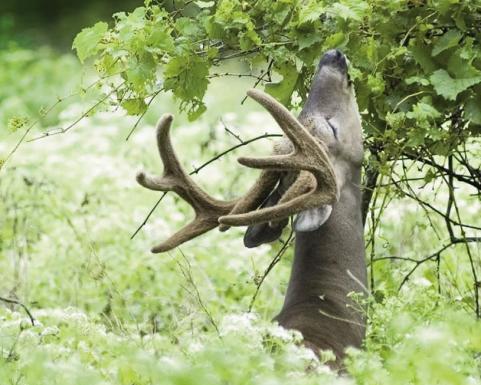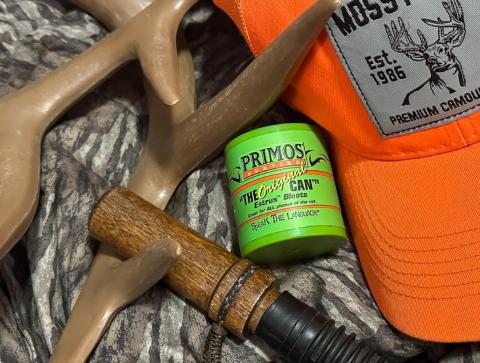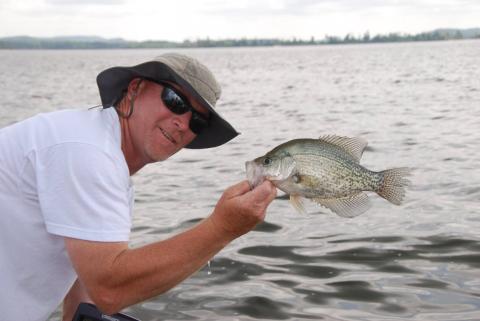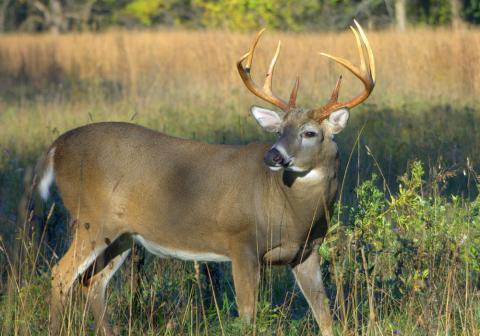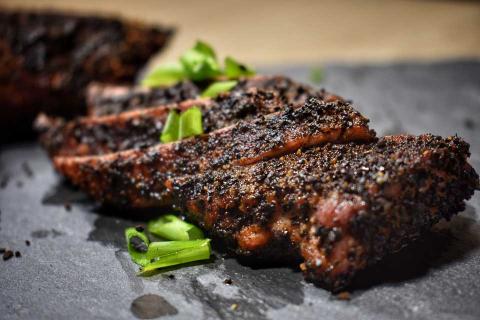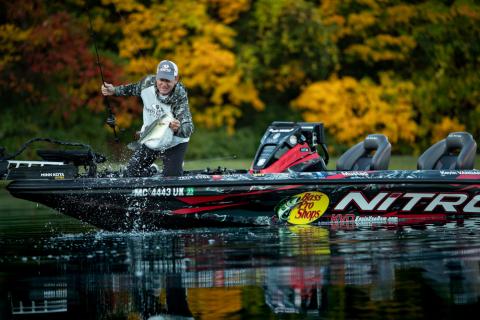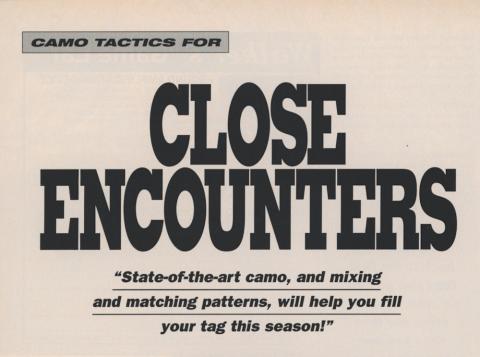provided by John E. Phillips
What if you could catch crappie that weighed 1-1/2 pounds or better most every time you went fishing? What if you didn’t have to spider rig with four poles per person and only used one pole to catch the biggest crappie in a lake? What if you could use your depth finder to pinpoint the biggest crappie, follow it until the fish stopped and then put your bait right on the crappie’s nose? What if you could tell the difference between a crappie’s head and tail before you ever released your bait? This new technology is some of what has been introduced to the crappie-fishing world recently. Two anglers, Ryan and Darin Young, are forging a new path that other crappie fishermen surely will follow.
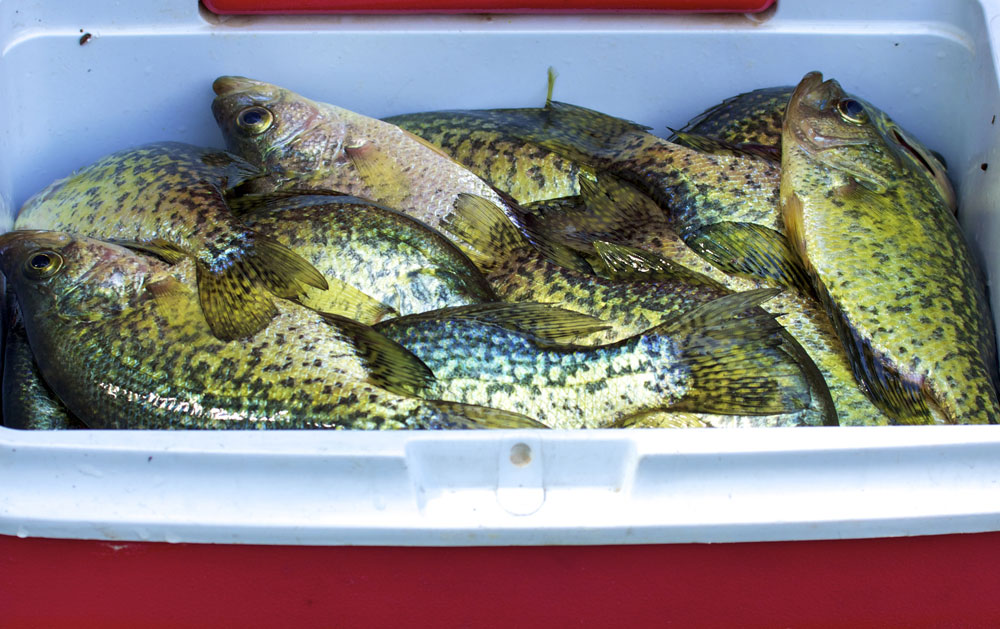
The Garmin Panoptix has been on the market for about 4 years, but LiveScope only has been available for about 2 years. Darin and I are still learning a lot about the information the LiveScope provides and how to interpret that information to find and catch more crappie. Before we got the LiveScope, like most other tournament fishermen, we were spider rigging and using anywhere from two to four poles per angler, while slow trolling, except in the summertime. During that time, we would use single poles to fish near underwater trees.
When I was spider rigging, sometimes my jigs or minnows were at different depths of water, while the boat was moving. Let’s say you’ve got your baits at 12 feet and 14 feet, but suddenly on your depth finder, you see a fish at 8 feet. Your line and bait will go right by that crappie without a reaction from the fish. With a LiveScope, I can take the closest rod to me and try to put my bait right on the nose of the fish that I want. By using the LiveScope and a single pole, I can be more selective, only fishing for the big crappie that I want to catch and keep.
While fishing in the American Crappie Trail National Championship for three days, we weighed in seven fish each day. Our total weight was 33.24 pounds, and we averaged about 1.62 ounces per crappie. During the tournament, about half of the anglers were using single poles and a LiveScope. The other half of the anglers were spider rigging and long-line pulling jigs or crankbaits. I definitely believe that we’re seeing a trend change, and soon enough, there will be more crappie fishermen starting to single-pole fish with their LiveScopes. If we look back at the history of most crappie fishermen, most of us learned how to crappie fish with a single pole, using minnows or jigs. To be honest, I still like fishing with a cork or bobber. 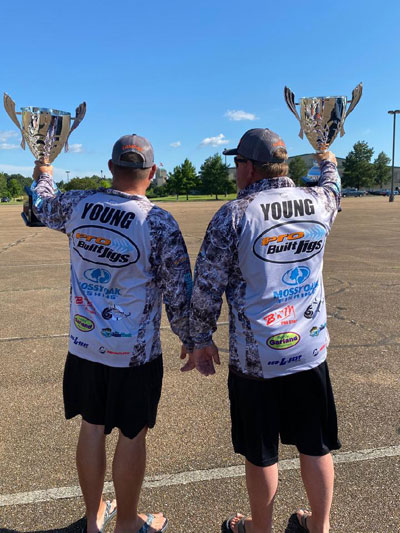
Although we still enjoy fishing those two methods, we made the switch to single-pole crappie fishing when we learned how to analyze fish on our Garmin Depth Finder. By learning to use the LiveScope, my brother and I no longer wasted time in a tournament fishing for a crappie that only weighed 1 pound. I could tell the difference between a 1-pound crappie, a 1-1/2 pound crappie, a 2-pound crappie, or a 2-1/2 pound crappie. To win a tournament, we have to catch seven of the biggest crappie in a lake.
My brother has a little lake by his house, and he’s caught two, 3-pound crappie out of it. There’s even a lake in Oklahoma that has produced 60 crappie that weigh 3 pounds or more each. The biggest crappie ever landed in my boat was caught by my stepson and weighed 3.39 pounds.
I started concentrating on the echo sound that I got from the LiveScope when it detected a fish. The units that I run have a grid with a 2-foot screen. I’ve realized that a 3-pound crappie would fill up that entire screen. I’ve looked at so many crappie on Lake Eufaula in Oklahoma where we legally can keep 37 crappie per person, and there’s no length limit. We usually catch 50-100 crappie on every trip I guide and only keep the biggest 37 per person. We rarely keep any crappie that are less than 10 inches long. So, when we prepare to fish a tournament, Darin and I go to different lakes in Oklahoma that hold big crappie and study how those fish behave, which helps us better identify big crappie on the tournament lakes we fish. We’ve also learned that big crappie move and attack baits in a different way than smaller crappie do. It’s easier to find big crappie when you understand how they bite and swim.
We’ve learned that you can catch bigger crappie in open water than on structure, especially if the water is stained. White crappie roam in open water often from December until June. Then when the water becomes really hot, they move into deeper water. Of course there’s a good number of crappie holding on structure in most lakes. In the winter months, when the crappie are holding tight on structure and won’t bite, I realized that if I could spook them out of the structure and follow them with my LiveScope, they’d start biting in open water.
Another thing we learned was that during the tournament, Darin only caught about 8-10 crappie on minnows. We caught the rest of the crappie on jigs. At least in this tournament, the hair jigs seemed to be as effective, if not more effective, than the rubber-body jigs. When we won the American Crappie Trail National Championship, my brother and I received a Ranger RT188 boat with a 150 hp Mercury Pro XS engine. The winning package was worth over $45,000.
If you’d like to learn more about the LiveScope or fish with Ryan Young or see the size of fish he’s catching, you can go to his Facebook page at Eufaula Boy’s Crappie Guide Service, or email him.






